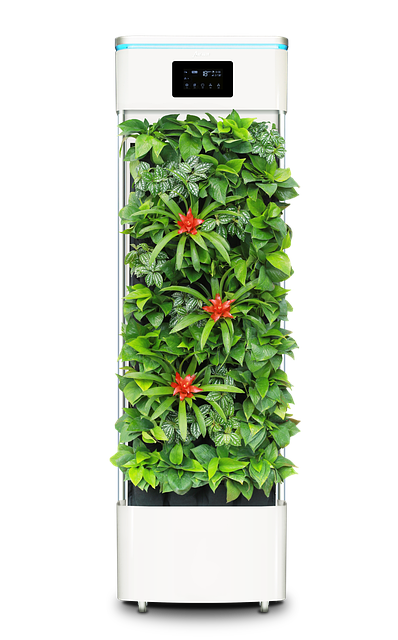Botanical Tapestries: Weaving Nature into Home Decor
In a world where digital screens dominate our daily lives, there's a growing desire to reconnect with nature within our living spaces. Enter botanical tapestries – a captivating fusion of art, nature, and textile craftsmanship that's taking the interior design world by storm. These lush, woven masterpieces bring the outdoors inside, transforming walls into living canvases bursting with flora and fauna. Let's explore this enchanting trend that's breathing new life into homes across the globe.

The Roots of Botanical Tapestries
Botanical tapestries have a rich history that intertwines art, science, and craftsmanship. Their origins can be traced back to medieval Europe, where herbalists and botanists meticulously documented plant species through detailed illustrations. These scientific drawings eventually inspired artisans to recreate nature’s beauty in woven form.
During the Renaissance, botanical tapestries gained prominence as symbols of wealth and intellectual curiosity. Wealthy patrons commissioned elaborate pieces featuring exotic flora from newly discovered lands, showcasing both their worldliness and appreciation for nature’s wonders.
The Arts and Crafts movement of the late 19th century saw a revival of interest in botanical motifs, with designers like William Morris creating intricate patterns inspired by native British plants. This resurgence laid the groundwork for the modern botanical tapestry trend we see today.
Contemporary Reinterpretation
Today’s botanical tapestries blend traditional techniques with modern aesthetics and technology. Digital printing has revolutionized the production process, allowing for hyper-realistic depictions of plants and flowers on fabric. These prints are then carefully woven or embroidered to add texture and depth, creating stunning pieces that blur the line between photography and textile art.
Contemporary artists are pushing the boundaries of the medium, experimenting with scale, color, and composition. Oversized tapestries featuring single, magnified blooms make bold statements in minimalist spaces, while intricate scenes of tangled vines and hidden creatures add whimsy and intrigue to eclectic interiors.
The Psychology of Biophilic Design
The popularity of botanical tapestries aligns with the growing interest in biophilic design – an approach that seeks to connect building occupants more closely to nature. Research has shown that exposure to natural elements, even in representational form, can reduce stress, improve cognitive function, and enhance overall well-being.
Botanical tapestries offer a unique way to incorporate biophilic principles into spaces where live plants may not be practical. They provide a constant visual connection to nature, evoking the calming effects of a walk through a lush garden or a peaceful forest glade.
Moreover, these textiles can help regulate the acoustic environment of a room, absorbing sound and creating a sense of tranquility. The tactile quality of woven or embroidered pieces adds another sensory dimension, inviting touch and further deepening our connection to the natural world.
Versatility in Design
One of the most appealing aspects of botanical tapestries is their versatility. They can be adapted to suit a wide range of interior styles, from bohemian to modern minimalist. In traditional settings, tapestries featuring classic botanical illustrations add a touch of timeless elegance. For contemporary spaces, abstract interpretations of plant forms create dynamic focal points.
Color plays a crucial role in the impact of botanical tapestries. While some designers opt for realistic hues to create a trompe l’oeil effect, others experiment with bold, unexpected color palettes. Monochromatic designs in shades of green bring a sense of lush abundance, while tapestries in jewel tones add drama and sophistication.
The size and placement of botanical tapestries also offer creative possibilities. A large piece can serve as a striking headboard alternative in a bedroom, while a series of smaller tapestries can create a gallery-like display in a hallway or stairwell. Some innovative designers are even using these textiles as room dividers or ceiling installations, completely immersing inhabitants in a botanical wonderland.
Sustainability and Artisanal Revival
The rise of botanical tapestries has had a positive impact on traditional textile communities around the world. As consumers seek out unique, handcrafted pieces, there’s been a renewed interest in ancient weaving techniques and natural dyes. This has led to the revival of artisanal workshops and the preservation of cultural heritage in regions known for their textile traditions.
Many designers are also embracing sustainable practices in the creation of botanical tapestries. Eco-friendly fibers like organic cotton, hemp, and recycled materials are becoming increasingly popular. Some artists are even experimenting with plant-based dyes and innovative techniques like solar printing to minimize environmental impact.
This focus on sustainability extends to the longevity of the pieces themselves. Unlike trendy wallpapers or mass-produced art prints, high-quality botanical tapestries are designed to last for generations, becoming cherished heirlooms that tell stories of our connection to nature.
Caring for Your Botanical Tapestry
To ensure the longevity of these textile treasures, proper care is essential. Gentle vacuuming with a soft brush attachment can help remove dust and debris. For more thorough cleaning, professional dry cleaning is recommended, especially for delicate or antique pieces.
Protecting tapestries from direct sunlight is crucial to prevent fading. Consider rotating their placement periodically to ensure even exposure. In humid environments, using a dehumidifier can help prevent mold growth and fiber degradation.
When not on display, tapestries should be stored rolled rather than folded to avoid creasing. Wrapping them in acid-free tissue paper and storing in a cool, dry place will help preserve their beauty for years to come.
As we continue to seek ways to bring nature into our living spaces, botanical tapestries offer a captivating solution. They remind us of the beauty and complexity of the natural world, inviting moments of reflection and wonder in our daily lives. Whether you choose a dramatic oversized piece or a collection of smaller textiles, these woven botanicals have the power to transform your home into a verdant sanctuary, nurturing both body and soul.





